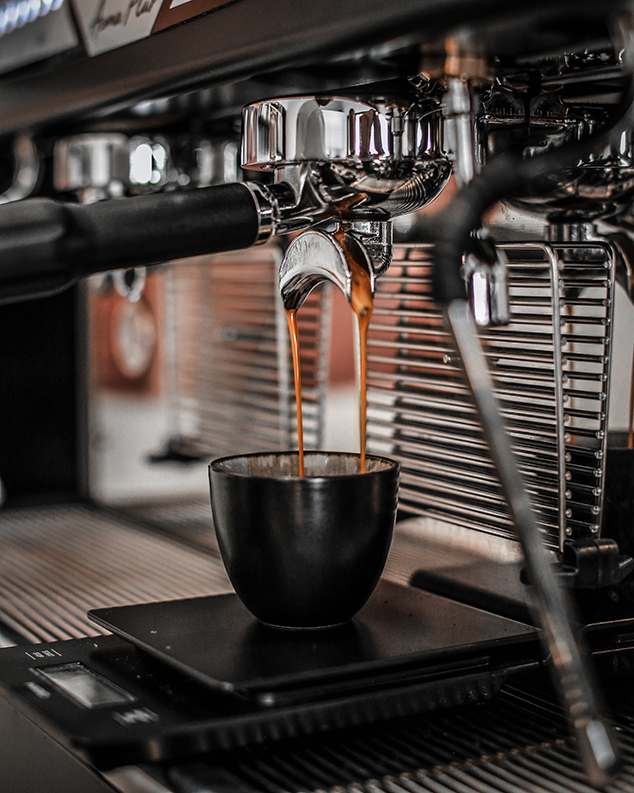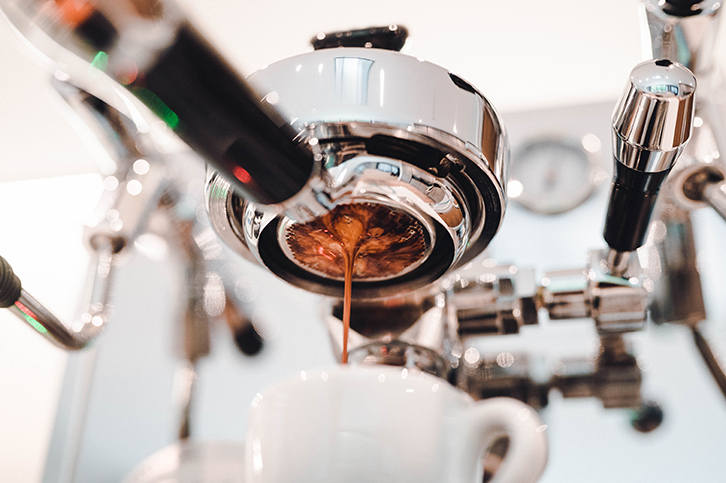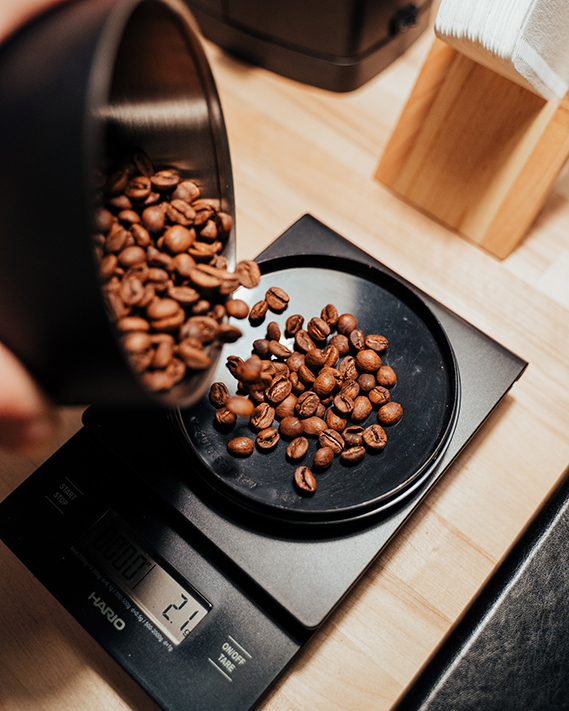Espresso is more than just a type of coffee; it’s a brewing method that extracts the heart of the coffee bean. The espresso machine is the tool that makes this possible. It’s a device that pushes hot water through finely ground coffee under high pressure, creating a beverage that’s rich, concentrated, and full of flavor.

In this article, we will delve deeper into the components of an espresso machine and explain how to master using it for optimal coffee brewing. We will also provide tips for achieving consistency, troubleshooting common issues, and maintaining your machine.
Whether a novice or an aspiring barista, this guide will help you decode the espresso machine and elevate your coffee brewing skills.
History and Evolution of Espresso Machines
The espresso machine has a fascinating history. The first patented version was created by Angelo Moriondo of Italy in 1884. However, Luigi Bezzera and Desiderio Pavoni made significant improvements and commercialized it in the early 20th century. Over the years, espresso machines have evolved from large, steam-powered units to the modern, sophisticated machines we see today in coffee shops and homes.
What Are The Different Espresso Machines?
There are a number of different of espresso machines, each with its unique features and ways of brewing:
- Manual Espresso Machines: These require a high level of skill as the user manually controls the brewing process.
- Semi-Automatic Machines: These offer a balance between manual control and automation, allowing the user to control the water flow for extraction.
- Fully Automatic Machines: These control the water volume and flow rate, making them easy to use but offering less control over the brewing process.
- Super-Automatic Machines: These are the most advanced, grinding the coffee beans, dosing, tamping, and extracting the espresso at the touch of a button.
Importance of Understanding Your Espresso Machine
Understanding your espresso machine is crucial to brewing the perfect cup of espresso. Each component plays a vital role in the brewing process, and knowing how they work can help you control the quality of your brew. It can also help you troubleshoot any issues that may arise during brewing.
Understanding the Components of an Espresso Machine
In this section of the article we will give you an understanding of the components of an espresso machine.
The Boiler and Its Function
The boiler is one of the most critical components of an espresso machine. It heats the water to the perfect temperature for extracting espresso. Some machines have a single boiler for both brewing and steaming, while others feature a dual-boiler system allowing simultaneous brewing and steaming. The boiler also generates the pressure needed for extraction. Understanding how the boiler works can help you achieve the right temperature and pressure for your espresso.

The Group Head and Portafilter
The group head and portafilter are where the magic happens. The group head is the component that distributes hot water evenly over the coffee grounds in the portafilter. The portafilter, on the other hand, holds the coffee grounds during the brewing process. It’s crucial to ensure the portafilter is correctly attached to the group head to prevent leaks and even extraction. You can learn more about the group head and portafilter here.
The Grinder and Importance of Grind Size
The grinder is another vital component of the espresso brewing process. It grinds the beans to the right size for espresso. The grind size is crucial because it affects the extraction rate. A fine grind is typically used for espresso as it slows down the water flow, allowing more time for the water to extract the coffee’s flavors. However, if the bean grind is too fine, it can lead to over-extraction and a bitter taste. You can learn more about the importance of grind size here.
The Steam Wand and Its Role in Milk Frothing
The steam wand’s use is for frothing milk for drinks like cappuccinos and lattes. It works by injecting steam into the milk, creating a creamy froth. The steam wand must be handled correctly for the right texture and temperature. It’s also essential to clean the steam wand after each use to prevent any milk residue from building up.
Other Components: Drip Tray, Water Reservoir, etc.
Other components of an espresso machine include the drip tray and water reservoir. The drip tray catches any spills during brewing, while the water reservoir holds the water used for brewing and steaming. Some machines also have a built-in tamper for compressing the coffee grounds, a pressure gauge to monitor the brewing pressure, and a heating surface to preheat cups. Understanding these components can help you use your espresso machine more effectively and maintain it properly.
Mastering the Use of an Espresso Machine
Following on from understanding an espresso machine we will now look at the elements needed to master the use of an espresso machine.
The Process of Making Espresso: A Step-by-Step Guide
Making espresso involves several steps:
- Grinding the Beans: Start by grinding your coffee beans to a fine consistency. Remember, the grind size is crucial for optimal extraction.
- Dosing: Measure the right amount of coffee grounds. For a double shot of espresso, you typically need 18-20 grams of coffee.
- Tamping: Compress the coffee grounds in the portafilter using a tamper. The aim is to create an even surface for the water to pass through.
- Brewing: Attach the portafilter to the group head and start the brewing process. The ideal brewing time for a double shot of espresso is about 25-30 seconds.
- Enjoying Your Espresso: Once the brewing process is complete, enjoy your freshly brewed espresso. Remember, the taste of your espresso will depend on the quality of your beans and precision of your brewing process.

Tips for Achieving Consistency
Achieving consistency in your espresso shots combines practice and understanding your espresso machine. Here are a few tips:
- Always use fresh coffee beans.
- Measure your coffee grounds and water accurately.
- Pay attention to the brewing time. A shot of espresso should take about 25-30 seconds.
- Practice your tamping technique to ensure an even extraction.
Troubleshooting Common Issues
Despite your best efforts, you might encounter some issues when brewing espresso. Here are some common problems and their solutions:
- Espresso tastes bitter: This could be due to over-extraction. Try using a coarser grind or reducing the brewing time.
- Espresso tastes sour: This could be due to under-extraction. Try using a finer grind or increasing the brewing time.
- Espresso is too weak: You might be using too little coffee. Try increasing the amount of coffee grounds.
Cleaning and Maintenance
Proper cleaning and maintenance are crucial for the longevity of your espresso machine. Here are some tips:
- Clean the portafilter and group head after each use.
- Purge and wipe the steam wand after frothing milk.
- Regularly clean the drip tray and water reservoir.
- Descale your espresso machine regularly to remove mineral buildup.
Conclusion
Mastering an espresso machine takes time and practice, but the reward is worth it. By understanding the components of your machine and the brewing process, you can make delicious espresso at home. Remember, consistency and attention to detail are the key to excellent espresso. Happy brewing!
FAQs
What are the three stages of espresso?
The process of brewing espresso can be divided into three stages: wetting, dissolution, and diffusion. During the wetting stage, the coffee grounds are pre-infused with hot water to allow them to swell and release gases. The dissolution stage is where the water extracts the soluble flavors from the coffee grounds. Finally, in the diffusion stage, the extracted flavors are transported from the coffee grounds to the liquid part of the espresso.
How do you program an espresso machine?
Programming an espresso machine depends on the type of machine you have. You can program the machine using the built-in digital display for automatic and super-automatic machines. It can include setting the grind size, coffee strength, water temperature, and brewing time. You have more manual control over the brewing process for semi-automatic machines, so programming might involve practicing your timing and tamping technique.
What is barista mode?
Barista mode is a feature found in some high-end espresso machines. This mode gives you more control over the brewing process, allowing you to adjust settings like water temperature, water pressure, and extraction time. It’s designed for experienced users who want to fine-tune their espresso to their exact preferences.
How do you set up your espresso machine for the first time?
Setting up an espresso machine for the first time involves several steps:
- Unpack and Assemble: Carefully unpack the machine and assemble any parts as per the manufacturer’s instructions.
- Clean: Clean all the removable parts and run a water cycle to clean the interior of the machine.
- Fill the Water Reservoir: Fill the water reservoir with fresh, cold water.
- Turn It On: Turn on the machine and allow it to heat up.
- Run a Test Cycle: Without using any coffee, run a test cycle to ensure everything is working correctly.
What is the golden rule for espresso?
The golden rule for espresso refers to the ideal ratio of coffee to water. The rule suggests using a 1:2 ratio, meaning for every gram of coffee, you should use two grams of water. So, if you’re using 18 grams of coffee, you should aim to extract 36 grams of espresso. This rule is a good starting point, but you can then adjust the ratio to suit your taste.
What are three shots of espresso called?
Three shots of espresso are often referred to as a triple shot or tripletto. This term is used in coffee shops to indicate an espresso drink made with three shots of espresso. It’s important to note that a triple shot of espresso will have a stronger flavor and higher caffeine content than a single or double shot.

Written by Robbie – Coffee Writer and Researcher at MyCoffeeBeanz.com
Robbie has over 15 years of extensive experience working in the coffee industry in marketing. As a native New Yorker he loves the hustle and bustle of a big city and enjoys nothing more than breaking up his busy day with trips to the nearest coffee shop for a double espresso. Find out more about Robbie
